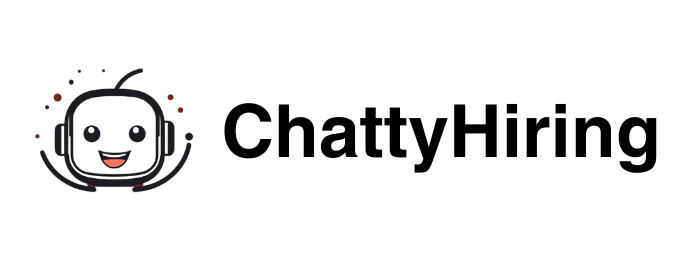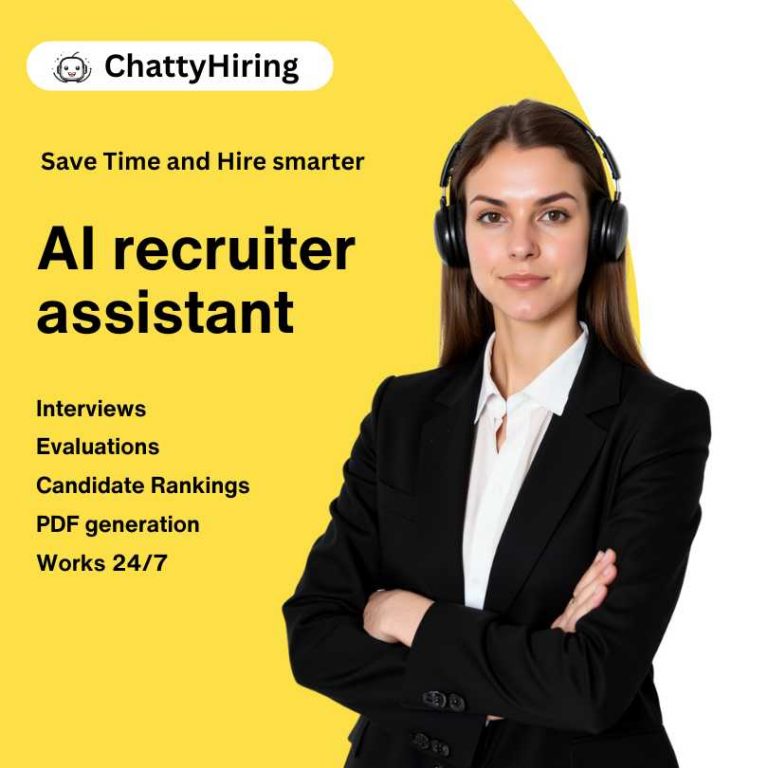Reactivating candidates takes a clear plan centered on personalized outreach that respects their time and interests.
Excellent outreach uses tailored messages that connect with candidates based on their previous interactions and current needs.
This approach increases the odds of re-engaging talent who may have lost interest or moved on.

Recruiters should leverage data and past communications to create relevant, timely messages.
Consistent engagement through thoughtful follow-ups and updates on new requisitions helps rebuild trust and interest.
Personalization is key to standing out and shows candidates they’re valued beyond just their CV.
Using automation tools for parts of this process lets recruiters focus more on authentic connections.
Training hiring teams in consistent, respectful communication ensures candidates feel respected and informed throughout their journey.
The Importance of Reactivating Candidates

Reactivating candidates brings excellent advantages to hiring teams.
It helps maintain a steady flow of qualified applicants and improves key recruitment metrics.
Engaging past candidates carefully can lead to better matches and faster hiring decisions.
Benefits for Talent Acquisition
Reengaging candidates reduces time spent sourcing new applicants.
Candidates already familiar with the company and who have shown interest usually require less vetting.
This can lower recruiting costs and speed up time-to-fill.
Personalized communication during reactivation also builds trust, making candidates more likely to accept offers or refer others.
It enhances talent acquisition by turning previous candidates into ongoing talent resources.
A focused outreach improves the candidate experience.
Clear instructions and individual attention help candidates feel valued, which reflects well on your employer brand.
Strengthening the Talent Pipeline
Reactivating candidates keeps your talent pipeline full and healthy.
Instead of building the pipeline from scratch, recruiters can tap into an existing pool of interested talent.
Personalized outreach makes the pipeline more reliable.
Candidates feel recognized and are more likely to stay engaged, ready to move quickly when new positions open.
Maintaining these relationships also supports diversity initiatives.
Recruiters can revisit diverse profiles that may align with future roles, strengthening the overall quality and variety within the talent pool.
Impact on Recruitment Outcomes
Reactivating candidates can boost recruitment outcomes by improving offer acceptance rates.
Candidates who feel individually considered are more likely to respond positively.
It also shortens the hiring cycle.
Faster communication and clearer next steps reduce candidate drop-off, helping decisions get made sooner.
Companies see higher retention when reactivated candidates are a strong fit.
Prior knowledge of skills and preferences lets recruiters match roles more accurately, reducing turnover.
For deeper strategies on candidate outreach, check out The Perfect Candidate Outreach Strategy.
Understanding Candidate Inactivity

Candidate inactivity can happen for several reasons.
Recognizing engagement patterns helps recruiters respond effectively.
Understanding why candidates stop responding is key to tailoring outreach and improving communication throughout the candidate journey.
Common Causes of Candidate Inactivity
Candidates often go inactive due to a lack of personalized communication.
Generic bulk emails rarely hold anyone’s interest.
Competing offers can also distract candidates, making them less likely to engage unless your communication feels relevant and timely.
Poor timing or frequency of messages is another factor.
Too many messages can overwhelm, while too few can cause candidates to lose interest.
Candidates may also drop off if the role doesn’t match their expectations or if the hiring process feels unclear or slow.
Recognizing Patterns in Candidate Engagement
Analyzing candidate data reveals trends that signal inactivity.
For example, candidates who open emails but don’t reply may need more personalized follow-ups.
Those who engage early but suddenly drop off could be overwhelmed or have found better opportunities.
Tracking response times and interaction rates across different channels helps identify when candidates are most responsive.
This data lets recruiters adjust contact methods or timing to boost reactivation rates.
Monitoring these patterns helps prevent drop-offs by addressing engagement gaps quickly.
Paying attention to these signals ensures your communication matches each candidate’s needs, improving candidate engagement.
For more on handling candidate silence, see how to deal with unresponsive candidates in recruiting.
Personalized Outreach Strategies
Personalized outreach is all about clear, tailored communication.
It uses specific data to shape messages and picks the best channels and timing to boost engagement.
Crafting Personalized Messages
Make your messages about the candidate’s skills, experience, and career goals.
Use their name and reference their past work to show genuine interest.
Keep your language clear and concise to avoid confusion.
Include a specific reason for reaching out so the candidate understands the opportunity.
Mentioning how their background fits the role can increase response rates.
Skip the generic stuff and focus on the candidate’s value.
Utilizing Candidate Data for Customization
Candidate data like work history, skills, and interests is crucial for customizing outreach.
Use this info to highlight relevant job details and benefits.
It also helps avoid sending irrelevant messages that get ignored.
Organize your data in applicant tracking systems or CRM tools for quick access.
This way, recruiters can tailor messages efficiently without starting from scratch every time.
Choosing the Right Communication Channels
Pick communication channels based on the candidate’s preferences and the purpose of your message.
Email works well for detailed info and formal outreach.
LinkedIn or social media are great for informal or initial contact.
Text messages or phone calls might be best for high-priority candidates who need a quick response.
Using multiple channels can increase engagement, but keep it respectful to avoid being annoying.
Timing and Frequency of Outreach
Timing matters for how your outreach is received.
Send messages during business hours on weekdays when candidates are more likely to check in.
Early mornings or midweek days often get better results.
Balance your frequency—too many messages can feel pushy, too few and you might miss out.
A good rule is to follow up 1-2 times after your first contact, making sure each message adds value.
For examples of personalized candidate outreach best practices, check out this guide on candidate outreach strategies.
Integrating AI and Automation
AI and automation help recruiters target talent more accurately and run personalized outreach at scale.
These tools improve how candidates are grouped and how messages are sent, making communication more efficient and relevant.
AI-Driven Candidate Segmentation
AI can scan huge databases to group candidates by skills, experience, past interactions, and career interests.
This segmentation helps recruiters identify who’s most likely to respond, leading to better candidate relationship management.
By setting clear criteria like job fit or engagement level, AI creates precise talent pools.
Recruiters can then tailor messages to each group’s needs and preferences.
Benefits of AI segmentation:
- Saves time sorting candidates manually
- Improves personalization by targeting relevant groups
- Increases response rates by focusing on engaged candidates
To get the most out of AI-driven segmentation, keep job requirements clear and update data regularly so candidate profiles stay fresh.
Automating Personalized Campaigns
Automation tools help send tailored emails and messages at just the right time, based on candidate behavior and preferences.
Personalized campaigns can include details like past application status, skills, and career goals to make communication feel more human.
Automation lets you schedule follow-ups or trigger them based on candidate actions, keeping contact consistent without the manual grind.
But don’t overdo it—balance automation with a personal touch so your outreach doesn’t feel robotic.
Key features for effective personalized campaigns:
- Dynamic content that changes by candidate segment
- Timed follow-ups based on behavior or response
- Integration with candidate relationship management systems to track engagement
Combining AI segmentation with automated, personalized outreach boosts recruitment efficiency and strengthens candidate relationships.
For more on best practices in AI recruiting, check out Best Practices for Using AI and Recruiting.
Enhancing Candidate Experience
Improving the candidate experience means making each step of the application process clear and relevant.
It’s all about tailored communication and easy-to-follow directions to keep candidates engaged and satisfied.
Personalized Candidate Experience
A personalized candidate experience addresses each person’s unique needs and preferences.
Use tools like Applicant Tracking Systems (ATS) to track prior interactions and tailor your messages based on candidate history.
This shows respect for the candidate’s time and effort.
Personalization can include referencing specific skills or achievements in your outreach.
Highlighting company perks that match the candidate’s values—like flexible hours or career growth—makes your outreach more appealing.
Personalized communication boosts candidate satisfaction by making candidates feel seen and valued.
It also reduces candidate drop-off by making your messages timely and relevant.
Providing Clear Instructions
Clear instructions in the application process prevent confusion and reduce frustration.
Every message should outline next steps in simple language—think deadlines, required documents, and submission methods.
Use bullet points or numbered lists to break things down:
- Update your resume with recent experience
- Complete the online form by Friday, July 4
- Submit references via the provided email
Clear instructions improve candidate satisfaction by setting expectations and removing guesswork.
This transparency makes the process smoother and keeps candidates motivated to continue.
Providing concise, easy directions shows you respect the candidate’s time, which boosts your employer brand.
Even if a candidate isn’t selected, they’ll remember the positive experience.
For more on improving the candidate experience, see strategies for a personalized candidate experience and the value of providing clear instructions.
Optimizing Outreach Content
Crafting outreach content means paying attention to details that boost candidate response.
Key elements include grabbing attention quickly and guiding candidates toward a clear next step.
Effective Subject Lines
Subject lines are the first thing candidates notice. They need to be clear, concise, and relevant to encourage candidates to open your message.
Personalization, like using the candidate’s name or highlighting their skill set, boosts your response rate. Avoid vague or overly salesy language and focus on the actual value or specifics of the role.
Short subject lines—about 40-50 characters—work best since they show up fully on most devices. Examples of excellent subject lines include:
- “Opportunity for Software Engineers at [Company]”
- “[Candidate Name], Interested in a New Project Manager Role?”
These examples set clear expectations and connect directly with the candidate, helping to improve open rates.
Creating a Clear Call to Action
A solid call to action (CTA) gives candidates a straightforward next step. It should answer, “What do you want the candidate to do?” and keep things simple.
Effective CTAs are brief and actionable, such as:
- “Reply with your availability for a quick call.”
- “Click here to schedule an interview.”
Stick to one main CTA per message to avoid confusion. Place it early in your content so candidates don’t have to scroll to find it.
Formatting CTAs in bold or as a button (if your email tool supports it) makes them stand out. Clear CTAs make it easy for candidates to respond and show you respect their time.
Measuring Success and Improving Response Rates
Tracking the right data helps talent acquisition teams see how well their outreach is working and where to make improvements. Key metrics like response rates and conversion rates show how candidates are engaging and moving through the recruitment funnel.
Essential Metrics to Track
Focus on metrics such as:
- Response rate: The percentage of candidates who reply to sourcing messages.
- Interview conversion rate: The number of interested candidates who move to interviews.
- Time-to-hire: The total time from initial outreach to offer acceptance.
- Application drop-off rate: Where candidates exit the process.
Regularly tracking these numbers helps spot trends. For example, a low response rate might mean your messaging needs work, while a long time-to-hire could point to delays in your process.
Analyzing Engagement Metrics
Candidate engagement metrics go beyond replies. These include:
- Email open and click rates: Shows how interested candidates are in your outreach.
- Interview-to-offer ratio: Indicates the quality of candidates progressing through each stage.
- Offer acceptance rate: Reflects how appealing your process and offers are.
Analyzing these metrics helps recruiters identify weak spots. If open rates are high but replies are low, your messages might need more clarity or personalization.
Combining these insights gives you a better understanding of candidate sentiment and helps guide your strategy.
Increasing Conversion Rates
To boost conversion rates and turn more candidates into hires, try these steps:
- Personalize outreach using details from candidates’ backgrounds or their previous interactions.
- Send follow-up messages at times when candidates are most likely to respond.
- Use clear CTAs and keep your language concise and relevant.
Measure changes after each tweak to see what works best. Regularly testing and refining your outreach based on data can steadily improve response and conversion rates.
For more on candidate engagement and metrics, check out candidate engagement strategies.
Strengthening Employer Brand Through Outreach
Excellent outreach helps build a recognizable and trustworthy employer brand. It’s all about showing what makes your company an excellent place to work and keeping communication honest and consistent.
Building a Positive Brand Image
A strong brand image starts with clear messaging about your company’s values and culture. Share authentic employee stories and highlight benefits like flexible schedules or professional growth opportunities.
Showcasing real content gives candidates a sense of your work environment. This helps attract people whose values align with your company, increasing the likelihood of a long-term fit.
Personalized communication during outreach also reinforces your brand. Tailoring messages to what each candidate cares about most helps build a stronger connection.
Maintaining Employer Brand Reputation
Employer brand reputation relies on consistency and transparency. Don’t overpromise—deliver what you advertise to earn trust.
Respond quickly and respectfully to candidate questions during outreach. This shows candidates they’re valued.
Regularly gather feedback from candidates and employees to spot areas for improvement. This keeps your brand image honest and responsive.
For more on building a strong employer brand, see the employer brand factsheet and best practices summary.
Relationship Building and Long-Term Talent Engagement
Building strong relationships with candidates is an ongoing process. It means keeping in touch and communicating thoughtfully to keep candidates interested in future opportunities.
Effective relationship management involves regular follow-ups and updates to maintain trust and connection.
Consistent Follow Up
Consistent follow-up keeps candidates engaged. Sending timely messages after interviews or first contact shows respect and keeps the conversation alive.
Set reminders to check in periodically. These messages can share new job openings, company news, or invite candidates to events.
Automated tools can help, but always personalize your content. A simple follow-up schedule could be:
- 1 week after initial contact
- 1 month check-in with updates
- Quarterly newsletters or new role announcements
This approach keeps your talent pipeline warm without overwhelming candidates.
Maintaining Communication After Initial Contact
Keeping the conversation going after first contact builds trust. Use regular newsletters, share company culture stories, or send helpful career resources.
Candidate relationship management works best as a two-way street. Ask for feedback or updates on their career goals—this makes candidates feel valued beyond just filling a vacancy.
Personalize messages based on interests or skills for a better response rate. Stay in touch even when you don’t have open roles, so you’re ready with a pool of qualified candidates when opportunities arise.
Regular communication like this strengthens your recruiter-candidate relationships. For more strategies, see talent pool nurturing and candidate relationship management best practices.
Tailoring Outreach to Company Culture and Role Requirements
Excellent candidate outreach matches your company’s personality and the requirements of the specific role. Communicating these clearly attracts candidates who fit your culture and are prepared for the job’s expectations.
Reflecting Company Culture in Outreach
Use the tone and style of your outreach to reflect your company culture. A startup might keep things casual and friendly, while a large enterprise might use a more polished, professional approach.
Share details about team values, the work environment, or your mission. Mentioning cultural perks like flexible hours, team events, or an innovation-driven atmosphere paints a clearer picture for candidates.
This helps attract people who will thrive in your environment and increases engagement rates.
Aligning Outreach with Job Descriptions
Make sure your outreach highlights the key points from the job description. Focus on the must-have skills, responsibilities, and growth opportunities so candidates know what to expect.
Customize your outreach based on what the job posting emphasizes—leadership, technical skills, or collaboration. This filters for candidates who are an excellent match.
Adding a quick summary of why the role matters within your company can boost interest. Explaining how the position fits into bigger projects or company goals gives it extra appeal.
Use bullet points or short lists to make job details easy to scan. This keeps candidates informed and your communication efficient.
For more on optimizing outreach for specific roles, see personalizing candidate engagement.
Reducing Time-to-Hire via Reactivation
Reactivating past candidates can significantly cut your time-to-hire. Instead of starting from scratch, reach out to candidates who already know your company and have gone through part of the recruitment process.
This saves time on sourcing and screening. A well-organized talent pool lets your hiring team focus on qualified candidates, improving hiring outcomes by speeding up decisions and reducing the risk of losing top talent.
Key practices for reducing time-to-hire through reactivation include:
- Keeping an up-to-date database of previous candidates
- Personalizing outreach based on past interactions
- Prioritizing candidates who match current requirements
- Using automation tools to quickly identify and connect with prospects
An efficient approach to talent management, combined with automation, boosts your team’s productivity. Having pre-screened candidates ready to go means you can contact them as soon as roles open up, avoiding delays from advertising and reviewing new applications.
Companies that focus on reducing time-to-hire benefit from faster team growth and cost savings. They also deliver a better candidate experience by avoiding repetitive interviews and long waits.
For more tips on streamlining this process, see effective strategies to reduce time-to-hire and building a proactive talent pipeline.
Key Takeaways for Effective Personalized Candidate Outreach
Effective personalized outreach helps recruiters stand out in a crowded talent market. It requires a clear understanding of who the candidates are and what motivates them.
Knowing your audience is crucial. Recruiters should research candidates’ backgrounds and interests to tailor messages that feel relevant and genuine.
Personalization goes beyond using a candidate’s name. It means highlighting specific skills, experiences, or goals that align with the job requirements and company culture.
Attracting top talent means offering more than just a salary. Candidates seek growth opportunities, work-life balance, and roles where they can make an impact.
Here are some excellent best practices for talent acquisition specialists and hiring managers:
- Use personalized, direct messages
- Highlight career growth and development
- Be clear about the role’s value and fit
- Follow up consistently without overwhelming
Automation tools can help manage outreach campaigns, but they shouldn’t replace the personal touch. Recruitment strategies that integrate personalized outreach often see higher response rates.
Maintaining a balance between efficiency and authenticity is essential. Candidates respond better when they feel valued as individuals, not just as resumes.
Personalized outreach builds trust and opens the door to meaningful conversations. This increases your chances of re-engaging promising candidates.
For practical guidance, check out this ultimate guide to candidate outreach.
-

A passionate advocate for the future of HR innovation. With expertise in leveraging AI to revolutionize recruitment processes, Carlos has a clear vision: empower HR teams while creating meaningful candidate experiences.
View all posts





